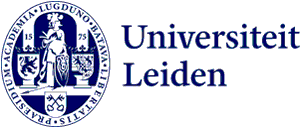
Modified caffeine molecules help medical research move forward
Before researchers can develop targeted drugs, they need to know exactly how a disease works. Biochemist Bert Beerkens created molecules that allow them to find out. He used caffeine as the basis for new molecules that enable research into certain receptor proteins on cells.
As a chemistry student, Bert Beerkens became fascinated by the field of research that allows chemistry to be used to study all kinds of processes in the body. 'You then design and produce molecules that have no medicinal effect, but which help other researchers in their work on a particular condition.'
Everywhere in our bodies
In his PhD research, Beerkens set to work to make molecules that bind to a protein that normally binds the substance adenosine. Adenosine is everywhere in our body. It is part of dna and also of ATP: adenosine triphosphate. This stores energy in all living cells and makes it available where it is needed.
Beerkens: 'Adenosine is also a signalling substance for communication between cells. If there is a lot of adenosine around a cell, it could mean that a cell in the area has died.' Then adenosine roams around from degraded ATP, and a neighbouring cell picks it up with special receptors on the cell membrane. 'Depending on the type of cell that picks up the adenosine, the result may be that the immune response is inhibited. Some tumours abuse this mechanism by actively producing adenosine receptors.'
Binding firmly to it as well as labelling the receptor
To investigate this, molecules are needed that, like adenosine, bind to adenosine receptors. Beerkens took up the challenge. Caffeine became the basis of the substances he developed. 'Caffeine also binds to the receptor, just not very strongly.' Beerkens experimented with additional atomic groups substituted onto the caffeine molecule. He succeeded in making molecules that not only bind tightly to the receptor, but also only to this type of receptor and not to anything else. 'There are four different adenosine receptors. For three of them I was able to design suitable molecules. For the fourth, my predecessor has already done it.'
Click chemistry turned out to be the solution, like Lego
The molecules not only had to bind tightly and selectively to the receptor, but also place a molecular label on it. 'Then researchers can see if and where which type of receptor is present.' That observation also had to be doable in living cell material, that is, without high doses of radioactive radiation. This was a tricky point in Beerkens' project. 'We succeeded by using click chemistry.' Last year, the Nobel Prize in chemistry went to the development of this type of chemistry. 'It works like Lego. When the caffeine-like molecule is attached to the adenosine receptor, another molecule that emits light, for example, clicks onto it.'

Beerkens received his PhD in November, his results having been published earlier. Is there an immediate rush of researchers using the molecules? 'Six months ago, a request came in from the US. A hospital wanted to investigate a disease in which adenosine seems to play a role. Besides that, it is still mainly happening in and around our lab, together with LUMC. 'This involves research into adenosine receptors on certain immune cells, to see what would be a good target for drugs to act on.'
Bert Beerkens received his PhD on 9 November for the thesis Affinity-Based Profiling of the Adenosine Receptors.
Text: Rianne Lindhout
